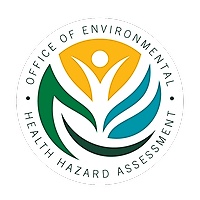 From the Office of Environmental Health Hazard Assessment (OEHHA) of the California Environmental Protection Agency:
From the Office of Environmental Health Hazard Assessment (OEHHA) of the California Environmental Protection Agency:
The Office of Environmental Health Hazard Assessment (OEHHA) of the California Environmental Protection Agency is announcing the release of a second draft document for public review describing proposed Public Health Goals (PHGs) for the five regulated haloacetic acids (HAAs) found in drinking water as a result of disinfection methods: monochloroacetic acid (MCA), dichloroacetic acid (DCA), trichloroacetic acid (TCA), monobromoacetic acid (MBA), and dibromoacetic acid (DBA).
A PHG is the level of a drinking water contaminant at which adverse health effects are not expected to occur from a lifetime of exposure. The California Safe Drinking Water Act of 1996[1] requires OEHHA to develop PHGs based exclusively on public health considerations.[2] PHGs published by OEHHA are considered by the State Water Resources Control Board in setting drinking water standards (Maximum Contaminant Levels, or MCLs) for California.[3]
The second draft technical support document, available for download below, presents the scientific information available on the toxicity of the HAAs and the calculation of the proposed PHGs. The proposed PHGs of 0.2 parts per billion (ppb) for DCA, 0.1 ppb for TCA, and 0.03 ppb for DBA are based on carcinogenicity and are set at a level of risk of one additional cancer case per one million persons exposed over a 70-year lifetime. The proposed PHGs of 53 ppb for MCA and 25 ppb for MBA are based on noncancer health effects. The draft document also presents health-protective drinking water concentrations for noncancer health effects for DCA, TCA, and DBA.
The draft technical support document was originally released for a 90-day public comment period in January 2020, and underwent an external scientific peer review that was completed in September 2020. The draft technical support document has been revised per public and peer review comments and is being released for a second public comment period that begins August 19, 2022 and ends September 18, 2022.
The public is encouraged to submit written comments via OEHHA’s website, rather than in paper form. Comments may be submitted electronically through the following link: https://oehha.ca.gov/comments.
Hardcopy comments may be mailed, faxed, or hand-delivered to the address below. Any written comments concerning this draft PHG document, regardless of the form or method of transmission, must be received by the PHG program on September 18, 2022 to be considered.
Following the second public comment period, OEHHA will evaluate all the comments received and revise the document as appropriate. After any subsequent revisions, the final document will be posted on the OEHHA website along with responses to the external peer review comments and to major comments received during the two public comment periods.
If you would like to receive further information on this announcement or have questions, please contact Hermelinda Jimenez at PHG.Program@oehha.ca.gov or at (916) 324-7572. Written inquiries can also be addressed to:
Pesticide and Environmental Toxicology Branch
Office of Environmental Health Hazard Assessment
California Environmental Protection Agency
P.O. Box 4010, MS-12B
Sacramento, California 95812-4010
Attention: PHG Program
Link to Public Comments
Downloads
Chemical Reference


